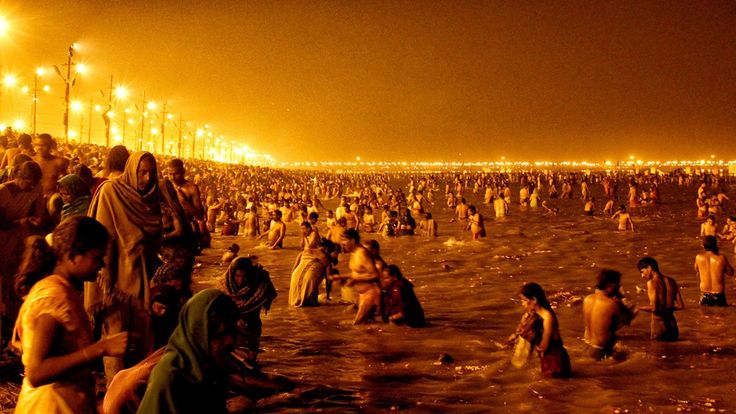Prayagraj: The Historic City of Spiritual and Cultural Significance
Introduction
Prayagraj, formerly known as Allahabad, is one of the most culturally and historically significant cities in India. Located at the confluence of the Ganges, Yamuna, and the mythical Sarasvati rivers, it holds a prominent place in Hindu mythology, history, and spirituality. The city has been a witness to centuries of changes, yet it retains its ancient glory, making it a revered destination for pilgrims and tourists alike. This article delves into the biography, history, cultural significance, and societal impact of Prayagraj, offering insights into its daily life and importance.
1. The History: A Legacy of Kings and Legends
It’s history stretches back over 2,000 years. It has been ruled by various dynasties, including the Mauryas, Guptas, and Mughals. The city’s roots are deeply connected with Hindu mythology, particularly in the belief that Lord Brahma performed a Yajna (sacrificial ritual) here. The name Prayagraj is derived from the word ‘Prayag,’ meaning a place of sacrifice. Over time, the city has witnessed several significant events, including its prominence during the Mughal era as a major administrative center.
In 1583, Emperor Akbar built the grand Allahabad Fort, which is still a marvel of Mughal architecture. Prayagraj was renamed Allahabad during the Mughal period, and this name remained until it was changed back to Prayagraj in 2018 by the Uttar Pradesh government, recognizing its historical and spiritual legacy.
2. Spiritual Significance and Daily Life Impacts
It is perhaps best known for the Kumbh Mela, the largest religious gathering on earth. This grand festival, held every 12 years, draws millions of devotees who come to bathe in the sacred waters of the Triveni Sangam to wash away their sins. The Kumbh Mela is a living testament to Prayagraj’s spiritual importance and its role as a center of Hindu rituals and customs.
For the residents, daily life in It is marked by a blend of modernity and tradition. The sacred ghats along the Ganges are used for daily rituals, including morning prayers and Ganga Aarti. Local markets, filled with vibrant colors and traditional items, add to the cultural vibrancy. People from all walks of life converge in the city, bringing their practices, making Prayagraj a microcosm of India’s spiritual diversity.
3. Cultural Influence on Society and Beyond
It’s cultural impact extends beyond religion. It is home to numerous schools, universities, and libraries, including the renowned Prayagraj University (formerly Allahabad University), which has produced several notable personalities in fields such as literature, politics, and law. The city has been a hub for writers and poets, and it continues to nurture intellectual and creative minds.
The Triveni Sangam itself remains a powerful symbol, representing the unity of three major rivers and, by extension, the unity of different cultural and spiritual beliefs in India. Prayagraj has long been a place where different ideologies converge and co-exist harmoniously, influencing national culture and society.
4. Significance of Observing Traditions and Rituals
The significance is not only tied to the grand religious events but also to the daily rituals and observances followed by its inhabitants. Pilgrims and locals alike make regular visits to the ghats, paying respects to the river and performing ritualistic bathing to cleanse their souls. The practice of Pranayama and yoga is also prevalent in It, with many ashrams and spiritual centers offering teachings on meditation and inner peace.
Additionally, Makar Sankranti, celebrated every January, marks a time when devotees take a dip in the Sangam, as they believe it brings prosperity and good fortune. These religious observances have a profound impact on the social fabric, shaping the city’s identity as a center of spiritual unity and peace.
5. Important Facts and FAQs
- What makes Prayagraj unique?
It is known for its confluence of three rivers, the Ganges, Yamuna, and Sarasvati, which makes it a spiritually significant place in Hinduism. Its role in the Kumbh Mela adds to its global recognition. - Why was renamed?
The city was renamed from Allahabad to Prayagraj in 2018 to revive its ancient name and honor its spiritual heritage. - How is connected to Indian politics?
It has been a stronghold for political leaders and has contributed significantly to India’s freedom struggle. It is also the birthplace of prominent leaders like Jawaharlal Nehru, the first Prime Minister of India.
6. Wishing and Societal Contributions
It’s impact on society is profound. It continues to be a place of pilgrimage and learning, providing spiritual solace and cultural enrichment. The city serves as an anchor for traditions while also embracing the modern world. Residents and visitors alike find peace and purpose in the city’s environment, which is steeped in history and spirituality.
By fostering a sense of unity among different faiths and communities, Prayagraj contributes to India’s diverse cultural fabric, promoting harmony, understanding, and collective well-being.
Conclusion
It’s history, spiritual significance, and cultural impact continue to shape not only the lives of its residents but also those across India and the world. With its deep historical roots and continuing influence in spiritual, social, and political realms, Prayagraj remains one of the most important cities in India. From the grand Kumbh Mela to its daily rituals, the city is a beacon of spiritual peace and cultural unity, offering timeless lessons that transcend generations.










